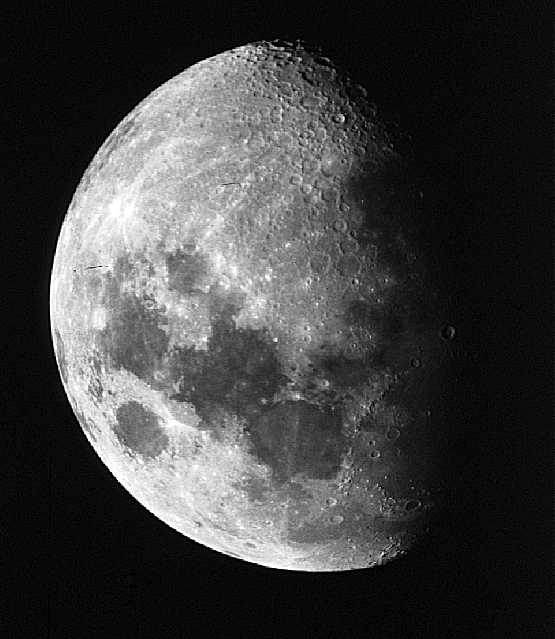
1/250 second exposure, Fuji Provia 400 slide film.
8" f/6 newtonian telescope at prime focus.

One day past first quarter, several spectacular craters are coming into view. In the southern highlands, Clavius and Tycho are now well presented, while near the centre of the moon Copernicus can be seen, and to the north, the dark-floored crater Plato stands out. To the south of Copernicus, on the edge of Mare Nubium, is the crater Bullialdus, while on the southern edge of the mare, is the dark-floored crater Pitatus.
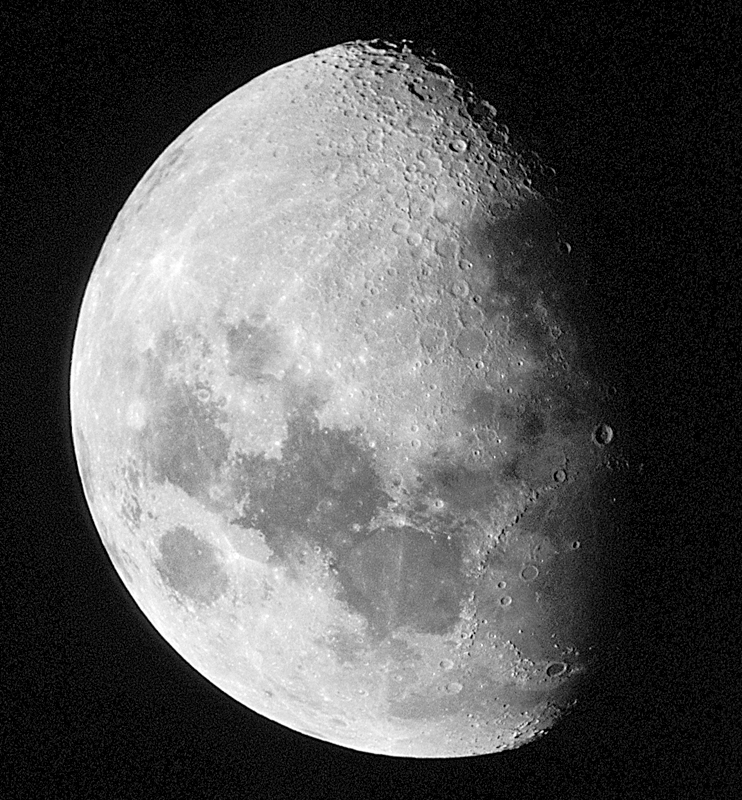
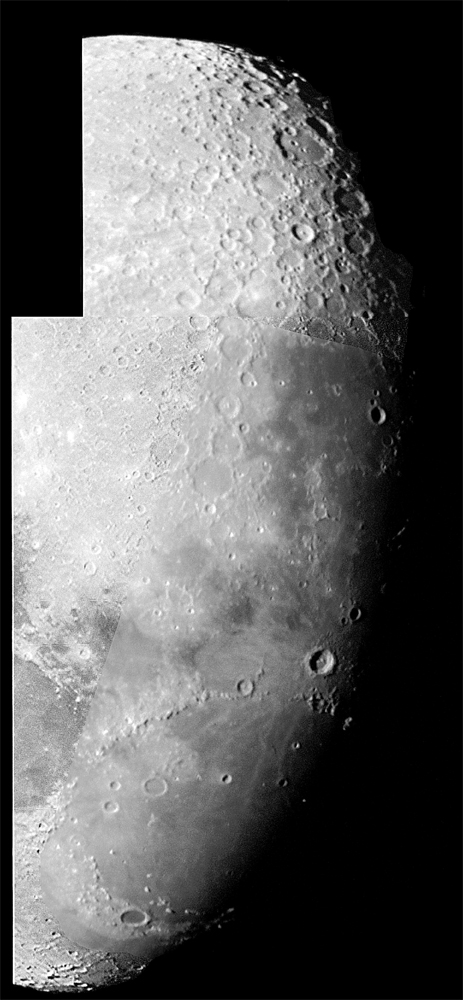
Mosiac of 3 photographs, each 1/250 second exposure, Kodak Ektachrome 400 slide film.
300mm f/6 newtonian telescope at prime focus.
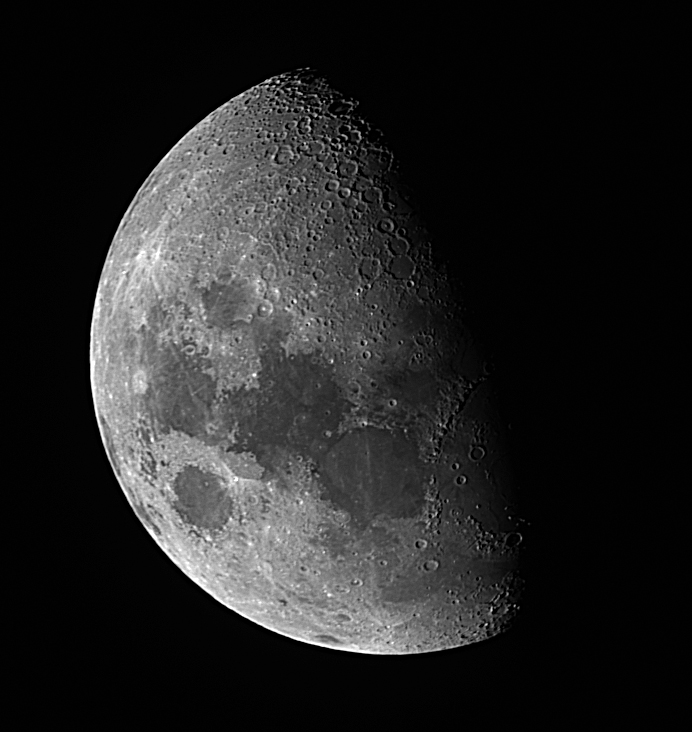
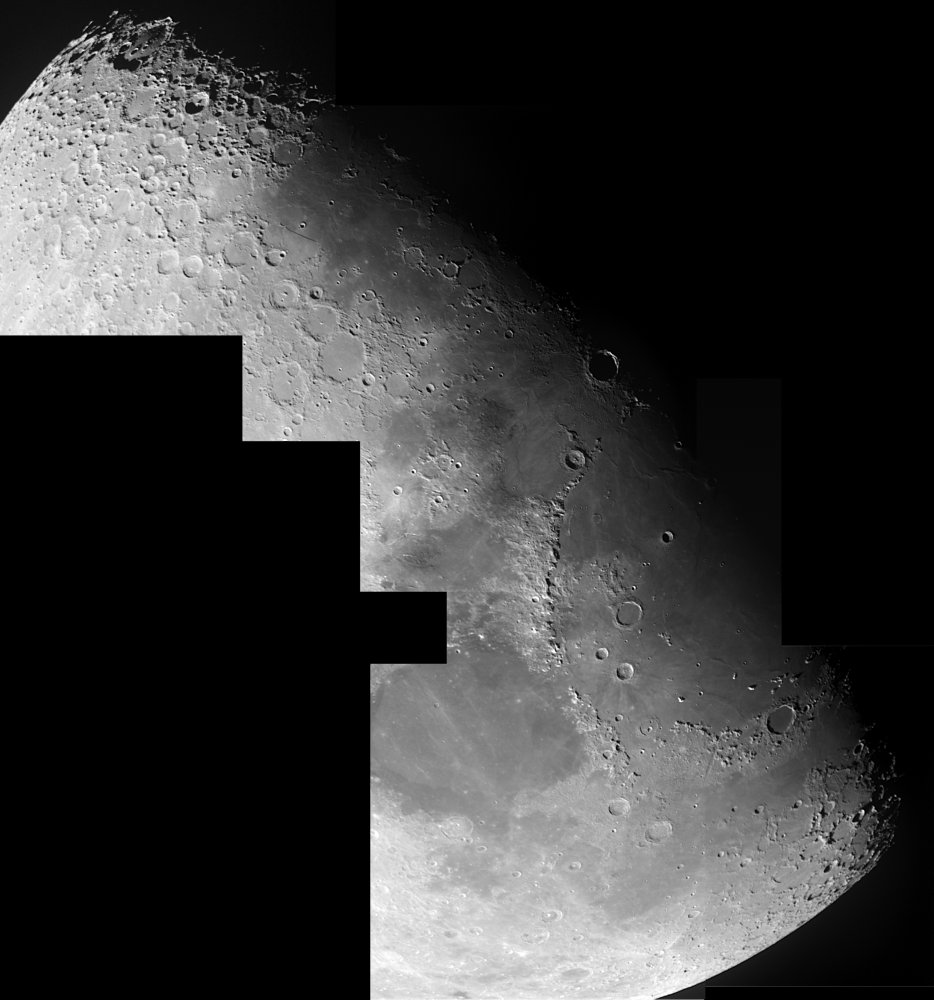
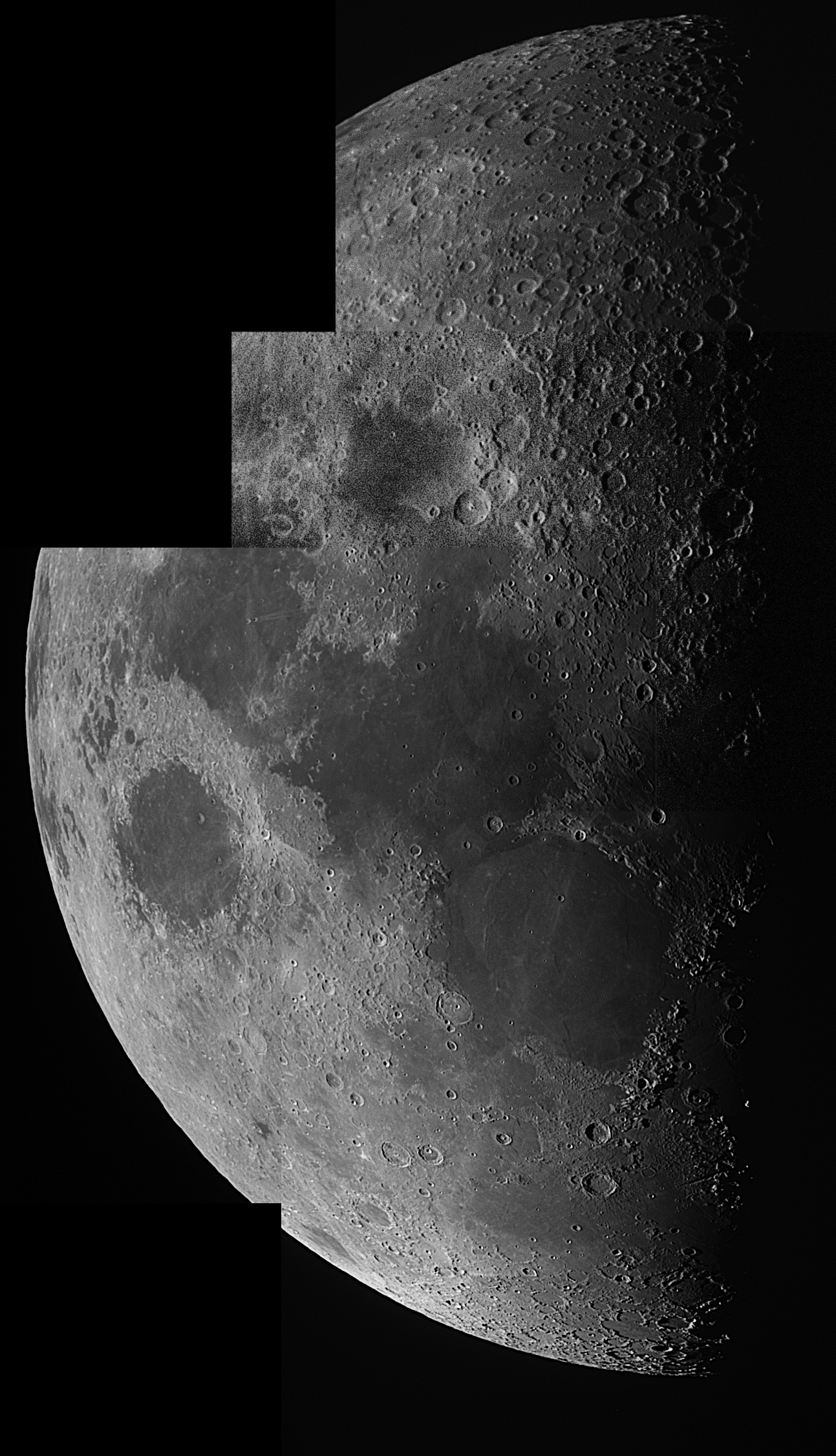
This was meant to be a full mosiac of the Moon. Unfortunately the clouds managed to become too thick before I could finish the set. :-(